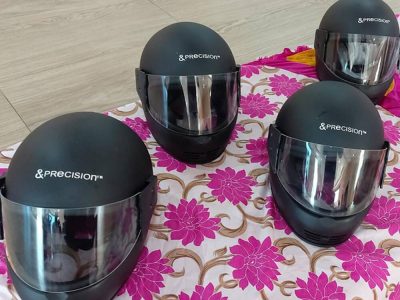
Things to Consider While Purchasing Electrical Accessories
September 6, 2021
Electrical Safety in this Festive Season
October 29, 2021Surface, Concealed, & Gang Boxes: Attributes & Applications of these Electrical Boxes
Electrical boxes are necessary accessories within your home’s electrical system.
But there is such a wide variety of them, knowing what to purchase can be a difficult process. There are gang boxes, surface boxes, concealed boxes; plastic, steel, and galvanized iron boxes; square, round, and octagonal boxes; and much more.
Mind you, these boxes are not hard to procure: you can have the pick of the inventories at various distributors i.e. hardware stores, home centres, and malls. Or, as a property development and architectural business, you can purchase them directly from electrical box manufacturers like Precision Electricals.
But, you will need to know their differentiating factors, their attributes, and their applications. This post outlines the 3 categories of electrical boxes for your convenience.
Surface Boxes
As their nomenclature suggests, surface boxes are on-the-wall electrical accessories, as opposed to concealed boxes, which are recessed in the wall. Like most electrical boxes, they are generally made of insulating materials like PVC and fibreglass, paired with non-metallic sheathed (NM) cables.
Surface boxes are used to house switchboard components like switches, plates, sockets, and wires. In doing so, they also separate the wiring from the external, habitable space, thus safeguarding the wiring from the elements and safeguarding inhabitants from the wiring.
This gives the cables a longer lifespan; termites, moisture, and extreme weather are unable to penetrate the insulating box. Surface boxes come in many sizes, and this leads to easy compatibility. Given their compact, simplistic design, with evenly-spaced cable clamps and contacts, they can be installed in minutes.
Concealed Boxes
Concealed boxes, as their nomenclature suggests, are in-wall or in-ceiling electrical accessories used for when wiring needs to be hidden, to improve the appearance of the interiors. Their application generally caters to fan boxes, conduit pipes, ceiling roses, etc. within a concealed electrical system.
Unlike surface boxes, they are constructed of either metal and plastic materials. Metal boxes, having higher strength, resist the harsh forces of the concrete wall, and also act as earthing mediums. However, that isn’t necessarily safe, so earthing terminals are also added to these boxes. Like surface boxes, concealed boxes also protect the switchboard components and wiring, increasing its lifespan.
Gang Boxes
Gang boxes have similar component-maintaining functions as the above two types of electrical boxes, but they diverge away from them insofar as their capacity goes. As their nomenclature suggests, they can be used as a “ganging” mechanism for various switchboard components.
A gang box will house different switchboard elements—switches, sockets, regulators, dimmers, indicators—and are highly expandable when they have the ability to “break sides,” converting 1-way cutouts into 2-way cutouts, 2-way into 3-way, and so forth. Several gang box manufacturers make sure that these devices are adaptable, which is a huge pluspoint!
Gang boxes will have a number of gangs, which refers to how wide it is and how many devices it can fit in the box. A one-gang box is wide enough for one device, such as a simple lighting switch and socket. Because of their flexible design, many DIY homeowners and electricians use gangboxes to make ad-hoc extension boards.
General Attributes of Electrical Boxes
Past all the different types, there are certain similar attributes that electrical boxes share, that are useful to understand.
Material: The material required for an electrical box largely depends on environment, weather, and function. Steel boxes are used for indoor metal-clad cables and conduits. PVC and fibreglass boxes are generally paired with indoor nonmetallic-sheathed (NM) cables. Galvanized iron and cast aluminum boxes are used outdoors with weatherproof applications or in indoor damp locations near the basement.
Volume: The total volume of a box depends on how many sockets, cable clamps, conductors, and wires will be housed in the box. Calculate the total volume for all of the components that will be installed into the box to determine how large a box you will need.
For more information on electrical boxes and their applications, you can consult with long-time manufacturers like Precision Electricals. We will offer you the salient information, based on your enquiries.



































































